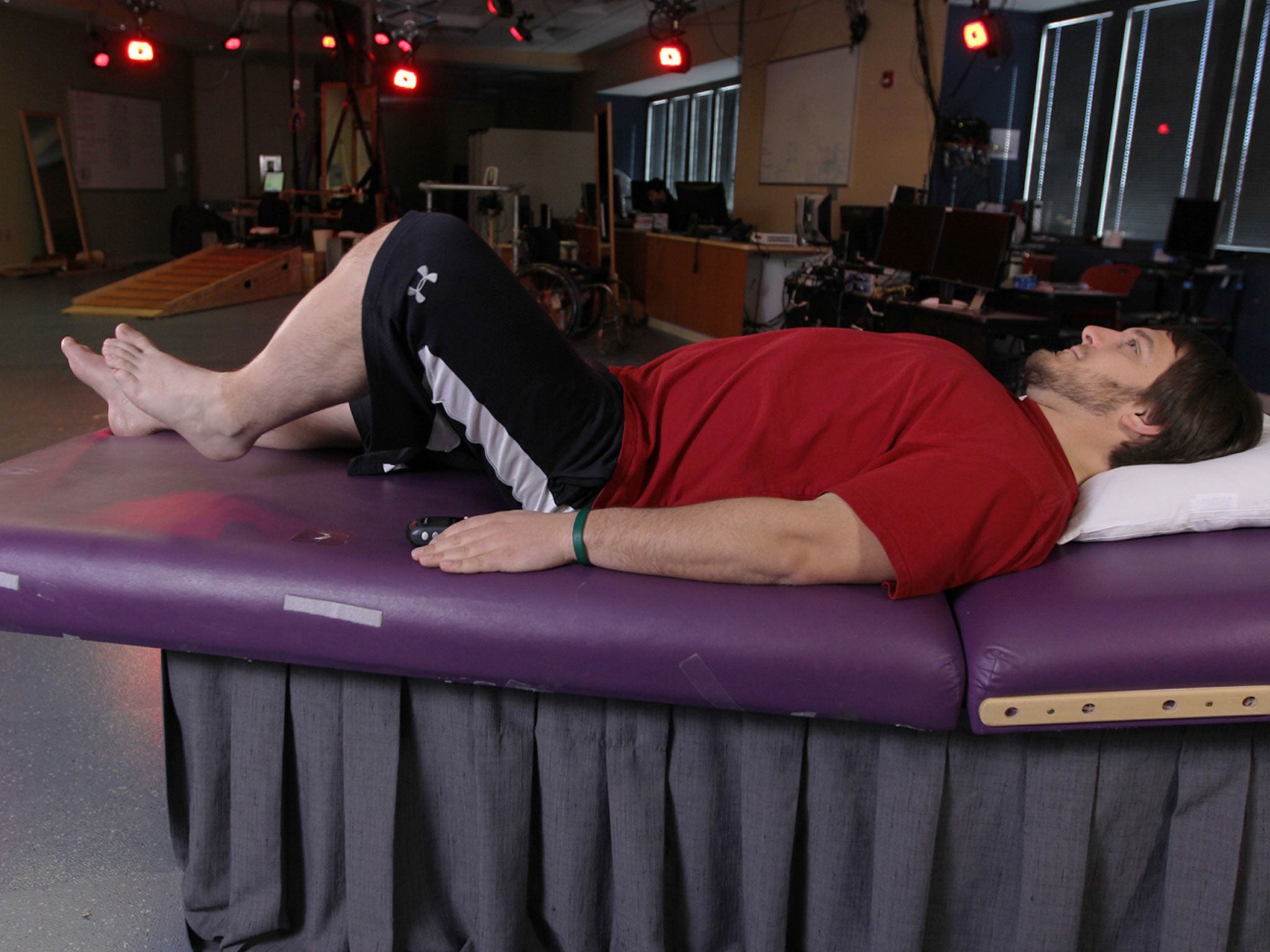Four paralysed men move their legs again after electric spinal cord stimulation
Fundamentally different treatment offers hope for other paralysed patients

Four paralysed men have been able to voluntarily move their legs and feet after an electrical device was implanted in their spines, researchers have reported.
The success, albeit in a small number of patients, offers hope that a fundamentally new treatment can help other paralysed patients, including those with spinal cord injuries.
People with spinal cord injuries often lose all sensation and mobility below the injury.
Bu even patients whose cases are deemed so hopeless they are not offered further rehabilitation might benefit, scientists say in research published today in the journal Brain.
"The big message here is that people with spinal cord injury of the type these men had no longer need to think they have a lifelong sentence of paralysis," Dr Roderic Pettigrew, director of the National Institute of Biomedical Imaging and Bioengineering, part of the National Institutes of Health, said.
A team at the University of Louisville and the University of California have been working on stimulating the spinal cord below the injury using electricity.
The research built upon the case of Rob Summers, a baseball player who had been injured in a hit-and-run accident in 2006, paralysing him below the neck.
Mr Summers received the epidural implant in 2009 just below the damaged area. The 2.5-ounce (72-gram) device began emitting electrical current at varying frequencies and intensities, stimulating dense bundles of neurons in the spinal cord.
Three days later he stood on his own, and in 2010 he took his first steps since his injury.
This treatment was performed on three other men who had been paralysed from below the neck or chest for at least two years from a spinal cord injury.
One of the study's authors, Claudia Angeli of the Kentucky Spinal Cord Research Centre at the University of Louisville, said she believes the device's zapping of the spinal cord helps it to receive simple commands from the brain, through circuitry that some doctors had assumed was beyond repair after severe paralysis.
Dustin Shillcox, 29, of Green River, Wyoming, was seriously injured in a car crash in 2010. Last year, he had the electrical device surgically implanted in his lower back in Kentucky. Five days later, he wiggled his toes and moved one of his feet for the first time.
"It was very exciting and emotional," said Shillcox. "It brought me a lot of hope."
The study's other two participants, Kent Stephenson of Mount Pleasant, Texas and Andrew Meas of Louisville, Kentucky, have had similar results.
"I've seen some benefits of (the device) training even when it's turned off," Mr Stephenson added. "There have been huge improvements in bowel, bladder and sexual function."
The researchers suspect that spinal cord patients will be able to "work toward stepping," with improved stimulator technology.
Additional reporting by agencies
Subscribe to Independent Premium to bookmark this article
Want to bookmark your favourite articles and stories to read or reference later? Start your Independent Premium subscription today.

Join our commenting forum
Join thought-provoking conversations, follow other Independent readers and see their replies